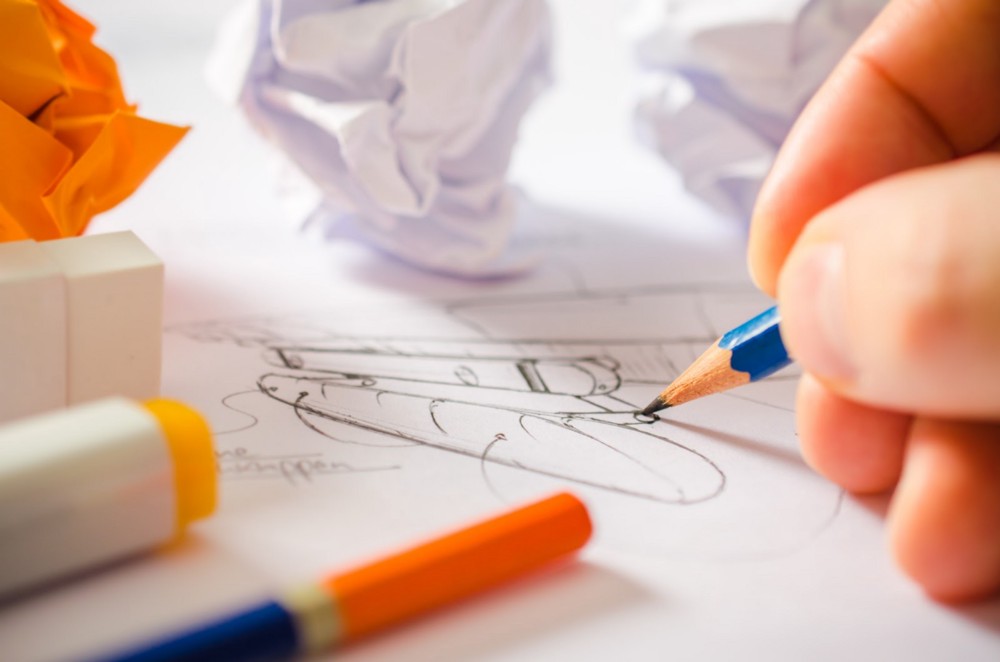Imagine you have an exciting new product. It’s something your team has spent months brainstorming, planning, tweaking, and honing until it matches your collective vision. You did everything right internally. But then, after spending all that valuable time, money, and resources, something doesn’t work as you thought when you release it to the world. Something you didn’t foresee stands between your product and a happy end user. Now you’re forced to start over from scratch.
Prototyping allows the creative capabilities of your team to be manifested into a tangible, end user experience. Effective and empathetic prototyping is often the biggest difference between a smooth, successful rollout and one that lands with a thud.
This happens far too often. I’ve seen it at every level of business and development, from small entrepreneurial endeavors to large-scale machine learning projects. By far, the number one culprit is that the development team either failed to prototype their product at all, or they failed to prototype it effectively.
A prototype is a scaled-down model that can test specific features and versions of your product cheaply and quickly. With prototypes, designers can observe and record the actual user’s experience, then make necessary adjustments. Prototyping enables the core development team to communicate their ideas to other stakeholders and participants. It’s all about bringing theoretical concepts to life, and exploring real-world impacts and effects before executing them on a broader scale.
Though each project is different, here are 5 best practices to ensure that your team churns out impactful and inexpensive prototypes.
1. Start with a specific question
Before you create a prototype, your team needs to ask itself, “Why are we creating this specific prototype?” Make sure you have a central question in mind (like testing a specific UX assumption, or gauging the usability of a particular design element), and then build your prototype to answer that central question. It’s important to remember that, though prototypes are scaled down, they don’t take broad strokes. The more specific your question, the more applicable your insights will be.
2. Harness the power of empathy
Just like in every other step of the Design Thinking process, empathy needs to stand front and center as you develop prototypes. Spend as much time as you can trying to understand what is most important to the happiness of your end user. Prioritize your prototyping energy on analyzing the inflection points of your users’ experiences and needs. Human-centered design is about listening. Respect your users’ interactions with your prototypes at every stage, even if it goes against the assumptions of your team. The worst thing you can do is write off what the user does as wrong.
3. Establish clear testing indicators
There are no established set of indicators or methods to evaluate prototypes. What is important is that your indicators are specific, relevant and measurable. Unlike your initial question, you don’t need to narrow your indicators down to one central variable. Be thorough. Brainstorm. Find ways to measure user performance and experience in as many ways as possible, from their freeform feedback, to their reactions, to their specific interactions with the interface.
4. Remember: Cheap and Fast
Especially for early-stage testing and modeling, start simple. Make quick and dirty prototypes. Utilize cheap, readily available materials. Your prototype should have the level of detail required for what you’re testing and nothing more. If you fail, that’s alright. It’s better to fail quickly and cheaply. Don’t let yourself become too invested in any one prototype. One of the most important components of Design Thinking is exploring unknown possibilities and uncovering unknown insights. By testing out as many features and models as cheaply and rapidly as possible, you’re keeping your project open to all avenues of growth.
5. Reclaim failure by taking the long view
Design Thinking isn’t a linear process. The insights generated from prototypes are often used to define other problems, ask new questions, and to build a more nuanced understanding of your user’s experience and needs. Because of this, reframe the idea of failure in prototyping. Failure isn’t a bad thing, it’s learning. Remember that bad ideas and failed prototypes often teach you more than successful prototypes do. When you think of prototypes as milestones and learning opportunities rather than an immediate means to an end, you set yourself up for positive failures that lead to new, more insightful experimentation.
Prototyping allows the creative capabilities of your team to be manifested into a tangible, end user experience. Effective and empathetic prototyping is often the biggest difference between a smooth, successful rollout and one that lands with a thud. For personalized insights on how to effectively implement every step of the Design Thinking process into your next project, contact Liquid Analytics for a free consultation.
Lyn Nguyen is the CEO of Liquid Analytics. She leverages machine learning and design thinking to drive innovative change for enterprise clients. Connect with her on LinkedIn.


